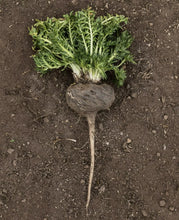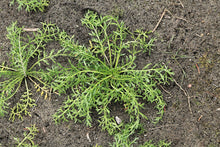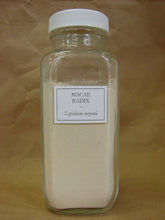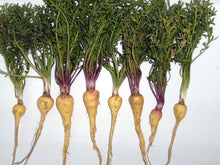Black Maca
Regular price
$6.00
Sale
Lepidium meyenii
Origin: Peru (via Netherlands)
Improvement status: Landrace
Seeds per packet: ~69
BOTANICAL SAMPLE - NOT GERMINATION TESTED
Life cycle: Biennial
Maca has in recent decades become popular far beyond its high-altitude Andean homeland. Domesticated in Peru and grown at over 10,000 feet in elevation, maca is not an easy plant to grow — but that hasn't stopped people from trying! A member of the Brassicaceae (cabbage) family, maca is the only tuberous member of the Lepidium genus, most well-known for the spicy-leafed herb garden cress (Lepidium sativum). Maca roots look like small tan radishes, they taste like a strange cross between turnip and butterscotch, and outside of Peru they are mostly consumed dried and powdered as a beverage or an ingredient in other dishes, like bread. Maca has become famous as a "superfood" primarily because of its reputation as a medicine for sexual dysfunction, particularly in men. Many people now use it as a general tonic for reproductive health. It is believed to increase libido and improve sperm counts and motility. Additionally, maca is said to help deal with osteoperosis, benign prostatic hyperplasia, menopause, and memory issues. Here is a helpful article from the journal Evidence-Based Complementary and Alternative Medicine detailing the health and nutritional properties of maca [https://www.ncbi.nlm.nih.gov/pmc/articles/PMC3184420/]. We haven't yet grown this ourselves (these seeds come from our friends at Sheffield's Seed Company in Locke, NY, who say they got them from the Netherlands), but we are excited to try them with you!
GROWING TIPS: Maca is very challenging to grow due to its adaptation for a very particular high-altitude climate. Additionally, germination is not very high on this lot of seeds — we're not sure if that's because of the seeds themselves or because they don't germinate well under standard germination test conditions. The great William Whitson of Cultivariable in Washington state used to grow maca and his website contains the best information we can find on growing it outside of its native range. You can read his detailed write-up here: https://www.cultivariable.com/instructions/andean-roots-tubers/how-to-grow-maca/
NOTE: Vegetation photo is from Frank Vincentz, available under a Creative Commons Attribution-Share Alike 3.0 license. Root powder photo is from Maša Sinreih in Valentina Vivod, under the same license. Fresh roots (appear to be yellow maca, not black maca) photo is from Vahe Martirosyan, available under a Creative Commons Attribution 2.5 license.








